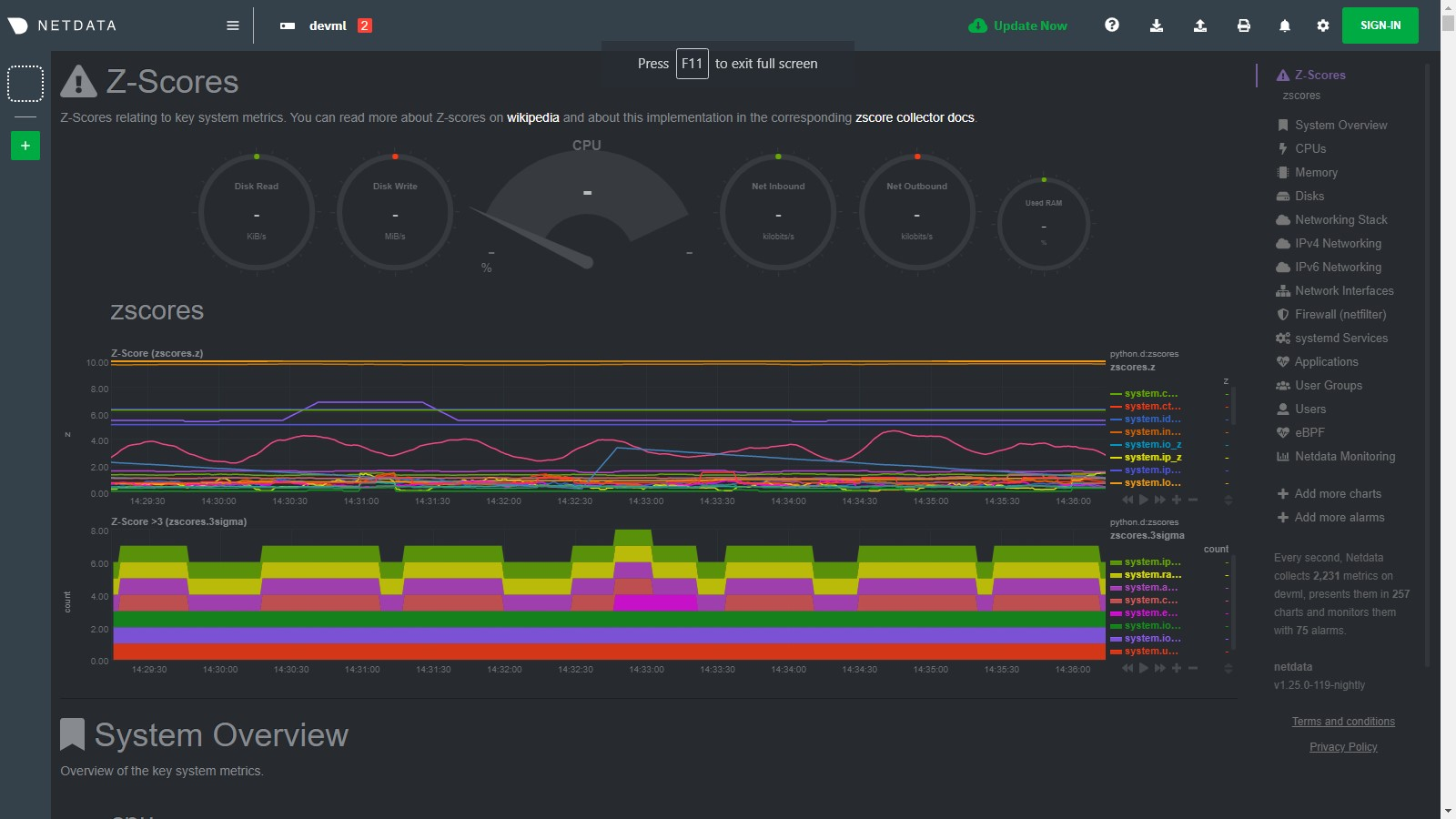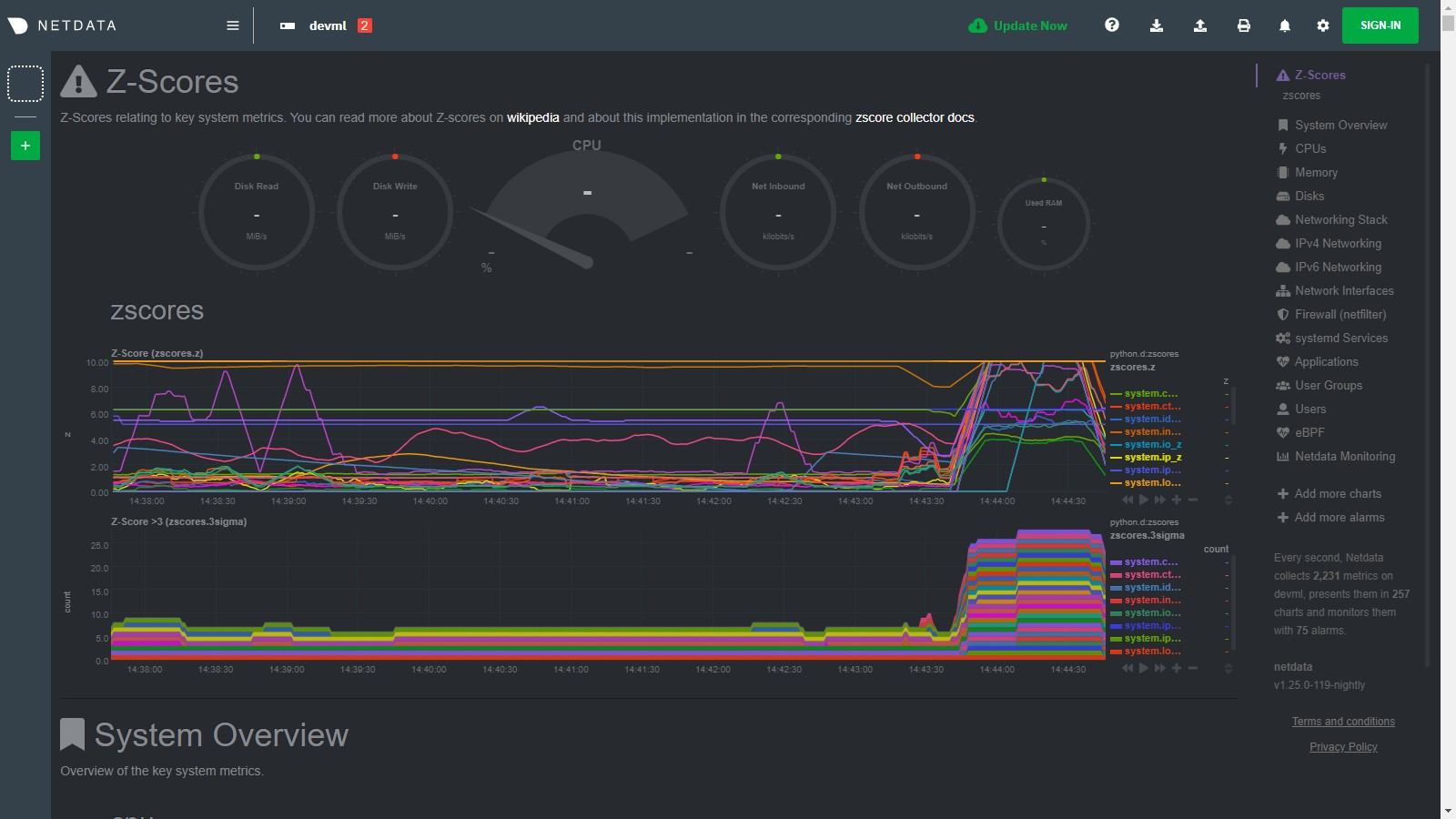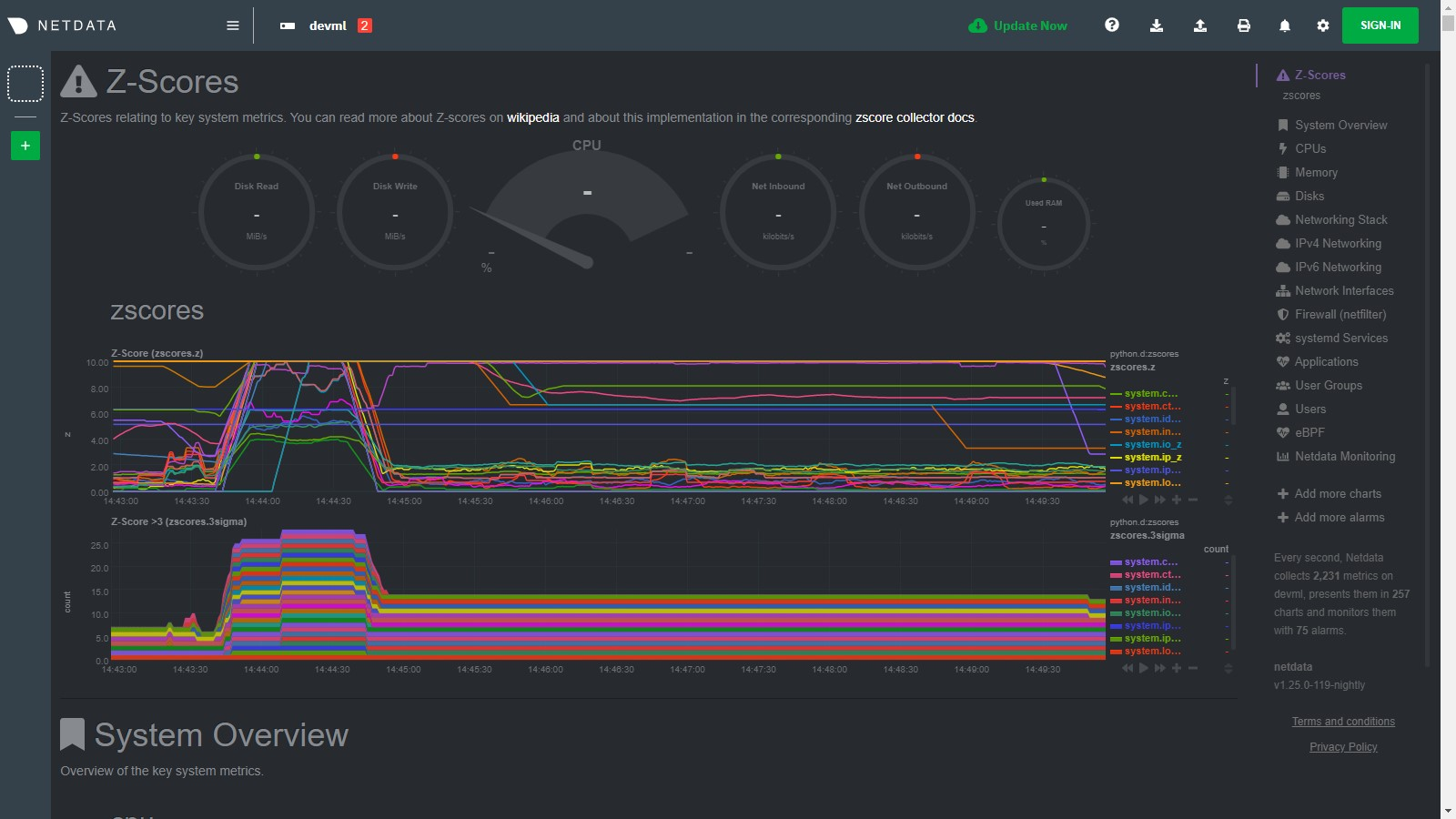zscores
Smoothed, rolling Z-Scores for selected metrics or charts.
This collector uses the Netdata rest api to get the mean and stddev
for each dimension on specified charts over a time range (defined by train_secs and offset_secs). For each dimension
it will calculate a Z-Score as z = (x - mean) / stddev (clipped at z_clip). Scores are then smoothed over
time (z_smooth_n) and, if mode: 'per_chart', aggregated across dimensions to a smoothed, rolling chart level Z-Score
at each time step.
Charts#
Two charts are produced:
- Z-Score (
zscores.z): This chart shows the calculated Z-Score per chart (or dimension ifmode='per_dim'). - Z-Score >3 (
zscores.3stddev): This chart shows a1if the absolute value of the Z-Score is greater than 3 or a0otherwise.
Below is an example of the charts produced by this collector and a typical example of how they would look when things
are 'normal' on the system. Most of the zscores tend to bounce randomly around a range typically between 0 to +3 (or -3
to +3 if z_abs: 'false'), a few charts might stay steady at a more constant higher value depending on your
configuration and the typical workload on your system (typically those charts that do not change that much have a
smaller range of values on which to calculate a zscore and so tend to have a higher typical zscore).
So really its a combination of the zscores values themselves plus, perhaps more importantly, how they change when something strange occurs on your system which can be most useful.

For example, if we go onto the system and run a command
like stress-ng --all 2 to create some stress, we see many charts
begin to have zscores that jump outside the typical range. When the absolute zscore for a chart is greater than 3 you
will see a corresponding line appear on the zscores.3stddev chart to make it a bit clearer what charts might be worth
looking at first (for more background information on why 3 stddev
see here)
.
In the example below we basically took a sledge hammer to our system so its not suprising that lots of charts light up after we run the stress command. In a more realistic setting you might just see a handful of charts with strange zscores and that could be a good indication of where to look first.

Then as the issue passes the zscores should settle back down into their normal range again as they are calculated in a
rolling and smoothed way (as defined by your zscores.conf file).

Requirements#
This collector will only work with Python 3 and requires the below packages be installed.
Configuration#
Install the underlying Python requirements, Enable the collector and restart Netdata.
The configuration for the zscores collector defines how it will behave on your system and might take some experimentation with over time to set it optimally. Out of the box, the config comes with some sane defaults to get you started.
If you are unsure about any of the below configuration options then it's best to just ignore all this and leave
the zscores.conf files alone to begin with. Then you can return to it later if you would like to tune things a bit
more once the collector is running for a while.
Edit the python.d/zscores.conf configuration file using edit-config from the your
agent's config directory, which is
usually at /etc/netdata.
The default configuration should look something like this. Here you can see each parameter (with sane defaults) and some information about each one and what it does.
Notes#
- Python 3 is required as the
netdata-pandaspackage uses python async libraries (asks and trio) to make asynchronous calls to the netdata rest api to get the required data for each chart when calculating the mean and stddev. - It may take a few hours or so for the collector to 'settle' into it's typical behaviour in terms of the scores you will see in the normal running of your system.
- The zscore you see for each chart when using
mode: 'per_chart'as actually an aggregated zscore accross all the dimensions on the underlying chart. - If you set
mode: 'per_dim'then you will see a zscore for each dimension on each chart as opposed to one per chart. - As this collector does some calculations itself in python you may want to try it out first on a test or development system to get a sense of its performance characteristics. Most of the work in calculating the mean and stddev will be pushed down to the underlying Netdata C libraries via the rest api. But some data wrangling and calculations are then done using Pandas and Numpy within the collector itself.
- On a development n1-standard-2 (2 vCPUs, 7.5 GB memory) vm running Ubuntu 18.04 LTS and not doing any work some of the
typical performance characteristics we saw from running this collector were:
- A runtime (
netdata.runtime_zscores) of ~50ms when doing scoring and ~500ms when recalculating the mean and stddev. - Typically 3%-3.5% cpu usage from scoring, jumping to ~35% for one second when recalculating the mean and stddev.
- About ~50mb of ram (
apps.mem) being continually used by thepython.d.plugin.
- A runtime (
- If you activate this collector on a fresh node, it might take a little while to build up enough data to calculate a
proper zscore. So until you actually have
train_secsof available data the mean and stddev calculated will be subject to more noise.